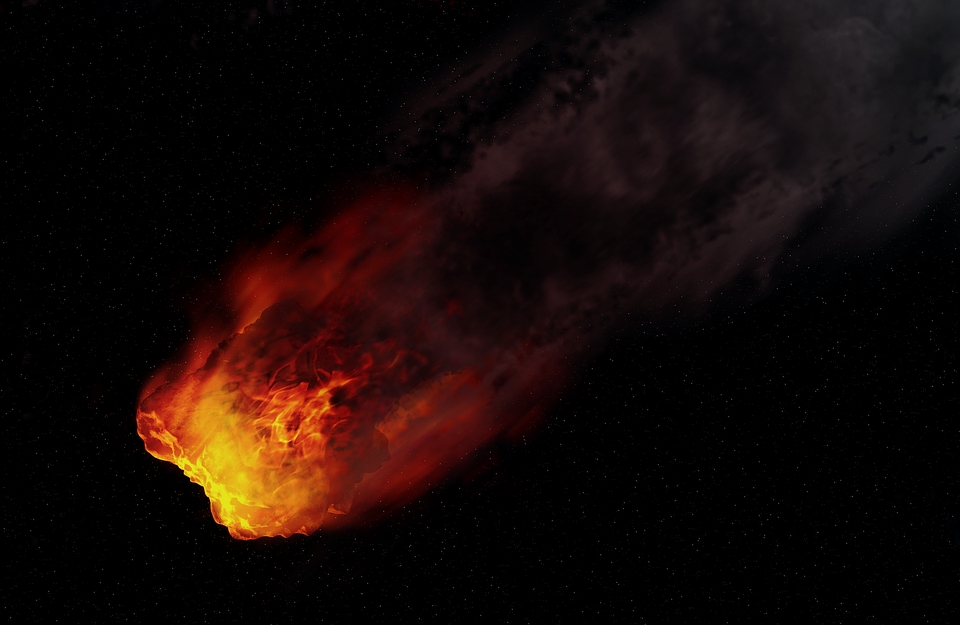Another asteroid is set to make an approach towards Earth’s orbit, as NASA’s asteroid trackers have noticed. It is now down to whether or not the asteroid will strike, and if it does not, how close is it going to get.
NASA’s asteroid trackers have spotted a space rock hurtling through space and towards the vicinity of the Earth at a speed of over 25, 433 miles per hour. Referred to by the agency as 2020 BB1, NASA predicts that it will arrive by the morning of the 23rd of January. The astronomers at the agency have classified it as coming to a “close approach” trajectory and a Near-Earth Object or NEO. Although they are classified as such, it is still possible for these celestial objects to make a landing within our planet and passing through the atmosphere.
BB1 measures about 20.6 feet to 45.9 feet in diameter, which makes it fairly smaller compared to other asteroids classified as NEOs. Fortunately, because of its small size, it is more likely that the asteroid would burn up in the atmosphere before reaching the ground if it ever decides to strike Earth. However, based on the Chelyabinsk incident in 2013, these small space rocks can still have quite an impact if it still makes it through.
The astronomers at NASA predict that the closest BB1 will be to the Earth would be at 0.00659 astronomical units. In human terms, BB1 would only get as far as 985, 849 kilometers from Earth. It is still far by human terms but still noticeable enough for NASA and other space agencies in the world.
Meanwhile, billions of years ago, the Earth was once covered in ice and was once known as the “Ice age” in human history. Now, NASA believes that the end of this ice age on Earth was also caused by an asteroid striking the planet. The space rock struck what is now referred to Western Australia and left a 70-kilometer crater called the Yarrabubba meteor crater and subsequently marked the beginning of the warming period and the end of the ice age on Earth.
According to the scientists, the asteroid had a hand in forming the climate of the planet not long after the appearance of oxygen in the atmosphere.



 Why some people don't trust science – and how to change their minds
Why some people don't trust science – and how to change their minds  Spacesuits need a major upgrade for the next phase of exploration
Spacesuits need a major upgrade for the next phase of exploration  Genetic diseases: How scientists are working to make DNA repair (almost) a piece of cake
Genetic diseases: How scientists are working to make DNA repair (almost) a piece of cake  Orbital resonance − the striking gravitational dance done by planets with aligning orbits
Orbital resonance − the striking gravitational dance done by planets with aligning orbits  Customizing mRNA is easy, and that's what makes it the next frontier for personalized medicine − a molecular biologist explains
Customizing mRNA is easy, and that's what makes it the next frontier for personalized medicine − a molecular biologist explains  The brain is the most complicated object in the universe. This is the story of scientists’ quest to decode it – and read people’s minds
The brain is the most complicated object in the universe. This is the story of scientists’ quest to decode it – and read people’s minds  Tatahouine: 'Star Wars meteorite' sheds light on the early Solar System
Tatahouine: 'Star Wars meteorite' sheds light on the early Solar System  Why now is the time to address humanity’s impact on the moon
Why now is the time to address humanity’s impact on the moon  Synthetic human embryos let researchers study early development while sidestepping ethical and logistical hurdles
Synthetic human embryos let researchers study early development while sidestepping ethical and logistical hurdles  What is minoxidil, the anti-balding hair growth treatment? Here’s what the science says
What is minoxidil, the anti-balding hair growth treatment? Here’s what the science says  The rising flood of space junk is a risk to us on Earth – and governments are on the hook
The rising flood of space junk is a risk to us on Earth – and governments are on the hook  Eggs from men, sperm from women: how stem cell science may change how we reproduce
Eggs from men, sperm from women: how stem cell science may change how we reproduce  The brightest object in the universe is a black hole that eats a star a day
The brightest object in the universe is a black hole that eats a star a day 






























